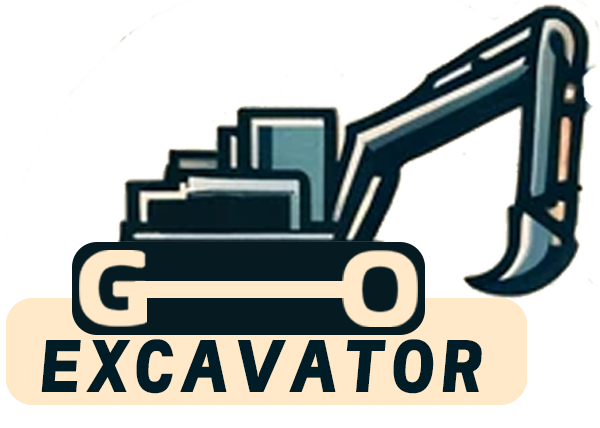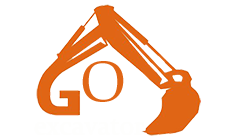
Dragline excavators are among the most versatile and essential machines in the construction and mining industries. Known for their large size and powerful capabilities, these machines are primarily used for heavy-duty excavation tasks. This blog will explore the various uses of dragline excavators, highlighting their importance in different sectors and providing insights into their operational advantages.
Dragline excavators are heavy machinery equipped with a large bucket suspended from a boom by wire ropes. They are commonly used in construction, mining, and other industries requiring significant earthmoving capabilities. This article will provide a detailed overview of the various applications of dragline excavators and their benefits.
What is a Dragline Excavator?
A dragline excavator consists of a boom, a bucket, and several cables and ropes that control the movement of the bucket. The bucket is dragged across the ground to collect material, which is then lifted and moved to a designated location. The key components include:
- Boom: The long arm that extends from the machine.
- Bucket: The large container used to scoop and transport material.
- Ropes and Cables: These control the bucket’s movement, including hoisting and dragging.
Uses of Dragline Excavators
1. Surface Mining
One of the primary uses of dragline excavators is in surface mining. They are essential for removing overburden, which is the layer of soil and rock covering a mineral deposit. The dragline’s ability to move large volumes of material quickly makes it ideal for this task. Key points include:
- Overburden Removal: Clearing the surface to expose coal, lignite, and other minerals.
- Efficiency: High productivity and cost-effectiveness in large-scale mining operations.
2. Excavation in Construction
Dragline excavators are also widely used in the construction industry for large-scale excavation projects. They are suitable for tasks such as:
- Foundation Excavation: Digging deep foundations for buildings and other structures.
- Dredging: Clearing waterways, ports, and harbors by removing sediment and debris.
- Road Construction: Excavating earth for the construction of highways and other infrastructure projects.
3. Environmental Management
In environmental management, dragline excavators play a crucial role in projects aimed at restoring and maintaining natural habitats. Their applications include:
- Land Reclamation: Converting unusable land into usable areas by removing contaminants and reshaping the terrain.
- Wetland Restoration: Reestablishing wetland areas by excavating and moving soil to create proper water flow and habitats.
4. Bulk Material Handling
Dragline excavators are highly effective in handling bulk materials, making them valuable in industries such as:
- Quarrying: Extracting stone, sand, and gravel from quarries.
- Stockpiling: Creating large stockpiles of materials such as coal, ore, and aggregates for future use.
Advantages of Using Dragline Excavators
High Efficiency
Dragline excavators are known for their high efficiency, especially in large-scale projects. Their ability to move vast amounts of material quickly reduces the time and labor required for excavation tasks.
Versatility
The versatility of dragline excavators allows them to be used in various applications across different industries. Whether it’s mining, construction, or environmental management, these machines can adapt to different tasks.
Cost-Effective
Despite their high initial cost, dragline excavators offer long-term cost savings. Their ability to handle large volumes of material reduces operational costs and increases overall productivity.
Durability and Reliability
Built to withstand harsh conditions, dragline excavators are highly durable and reliable. They require less frequent maintenance compared to other types of excavation equipment, resulting in lower downtime and higher efficiency.
Limitations of Dragline Excavators
While dragline excavators offer numerous advantages, they also have some limitations:
- High Initial Cost: The initial investment for purchasing and setting up a dragline excavator is significant.
- Limited Mobility: Due to their large size, dragline excavators are not easily transported from one site to another.
- Complex Operation: Operating a dragline excavator requires specialized training and skill.
Dragline excavators are indispensable tools in various industries, offering high efficiency, versatility, and durability. Their ability to perform large-scale excavation tasks makes them essential for mining, construction, environmental management, and bulk material handling. Understanding their uses and benefits can help industries leverage these powerful machines for improved productivity and cost-effectiveness.
FAQs About Dragline Excavators
Q1: What industries commonly use dragline excavators?
A1: Dragline excavators are commonly used in mining, construction, environmental management, and bulk material handling industries.
Q2: What is the primary advantage of using a dragline excavator in surface mining?
A2: The primary advantage is the efficient removal of overburden, which allows for the quick and cost-effective extraction of minerals.
Q3: Are dragline excavators suitable for small-scale projects?
3: No, dragline excavators are more suitable for large-scale projects due to their size and high capacity for moving material.
Q4: What factors should be considered when choosing a dragline excavator?
A4: Factors to consider include the scale of the project, the type of material to be excavated, and the specific requirements of the task at hand.
Q5: How often do dragline excavators require maintenance?
5: While dragline excavators are durable and reliable, regular maintenance is essential to ensure optimal performance and longevity. Maintenance frequency depends on usage and operating conditions.
A Comprehensive Guide to Buying a Excavator Second Hand
Purchasing a second-hand excavator can be a cost-effective solution for your construction or landscaping needs. However, buying used machinery comes with its own set of challenges and considerations. This comprehensive guide will walk you through [...]
Comprehensive Guide to Hyundai Mini Excavators: Features and Prices
Mini excavators have become indispensable tools in the construction and landscaping industries. Hyundai Construction Equipment, a global leader in heavy machinery, offers a range of mini excavators known for their reliability, efficiency, and advanced features. [...]
How to Extend the Service Life of Excavator Parts
Excavators are indispensable machines in the construction and mining industries. They perform heavy-duty tasks that demand robust components and meticulous maintenance. Extending the service life of excavator parts not only reduces operational costs but enhances [...]
Kymron Excavators: Innovative, Sustainable Construction Machinery
In the dynamic world of construction and heavy machinery, Kymron has emerged as a game-changer. Specializing in advanced excavator technology, Kymron is redefining industry standards with its commitment to innovation, efficiency, and sustainability. Company Overview [...]
Bulldozer vs. Wheeled Excavator: Which Machine is Better for Moving Soil?
Moving soil is a fundamental task in construction, landscaping, and earthmoving projects. Choosing the right machinery for the job can significantly impact efficiency, cost, and project timelines. Two of the most commonly used machines for [...]
Why Are Small Excavators Favored? A Comprehensive Guide
In the world of construction and landscaping, efficiency and versatility are key. Among the myriad of machinery available, small excavators have risen in popularity. But what makes them so favored? Introduction to Small Excavators Small [...]




